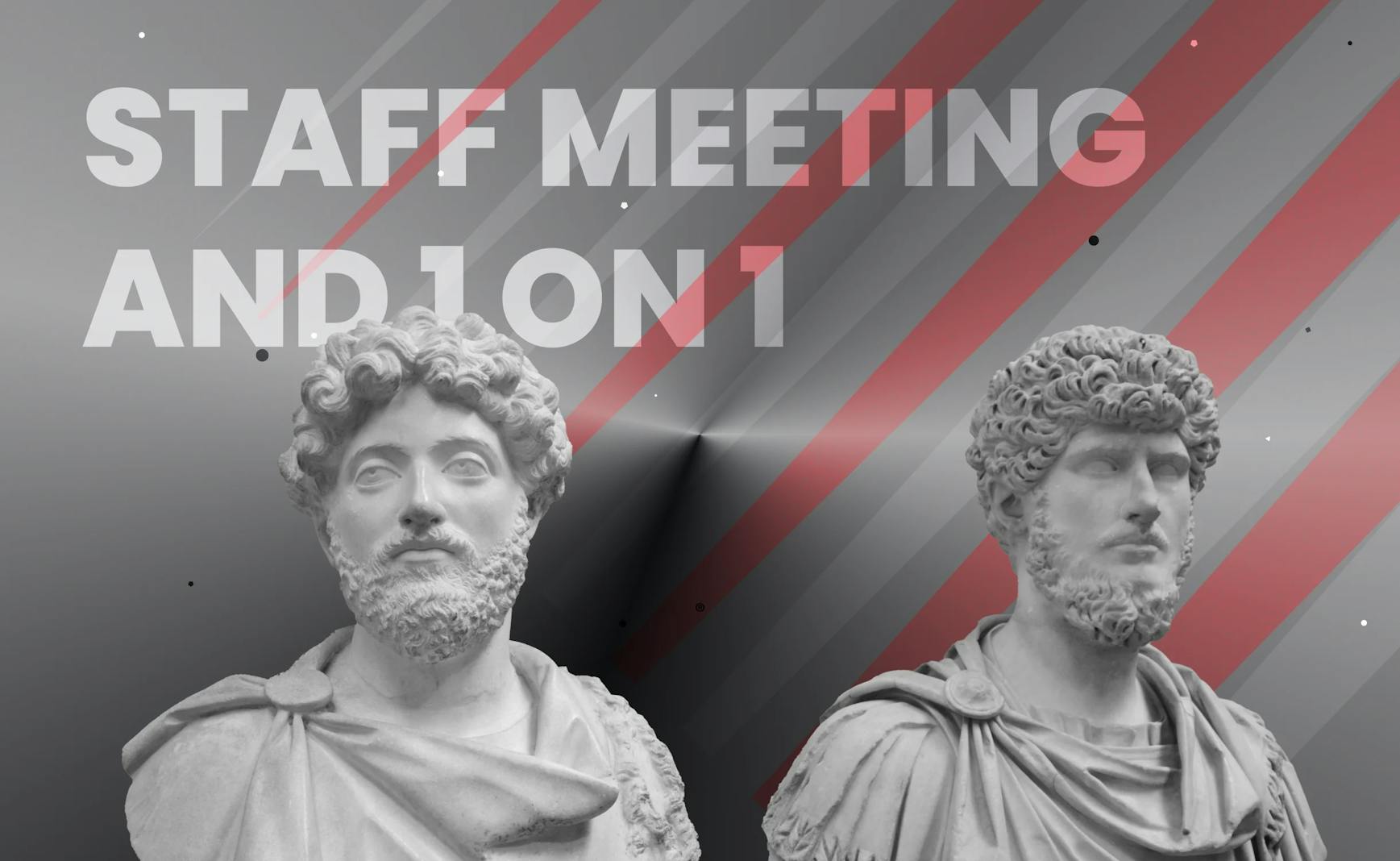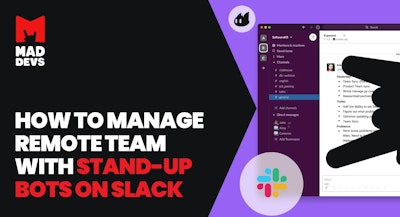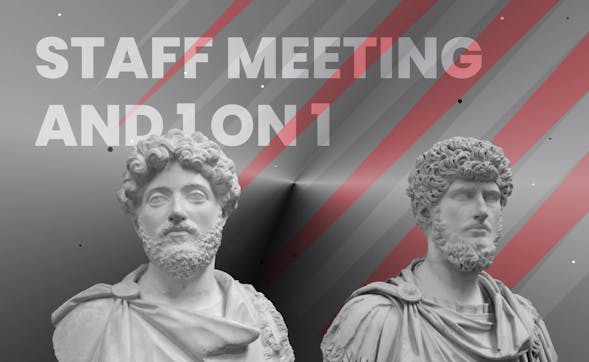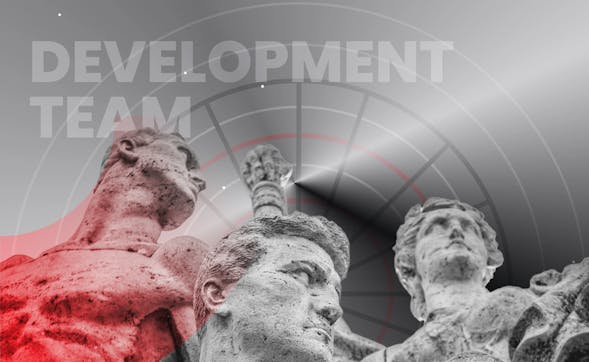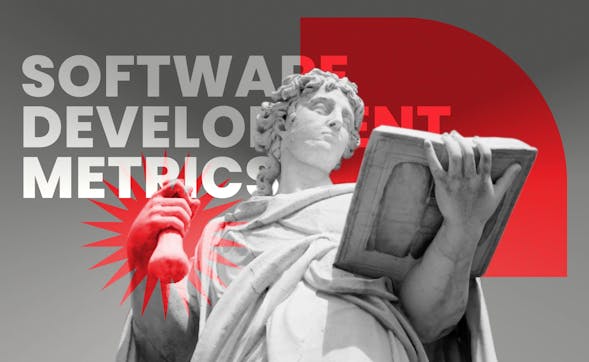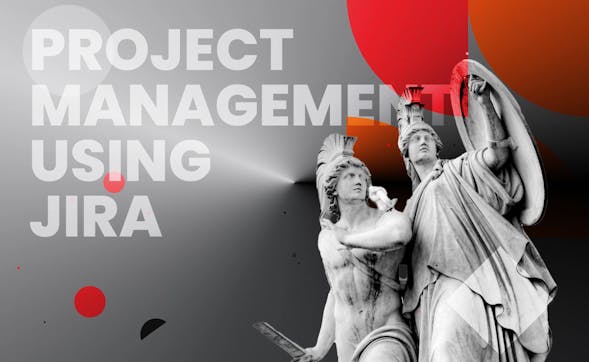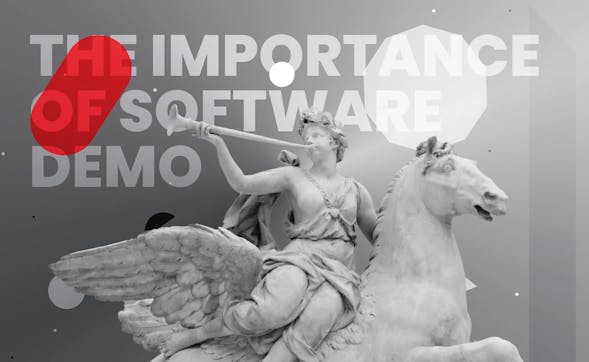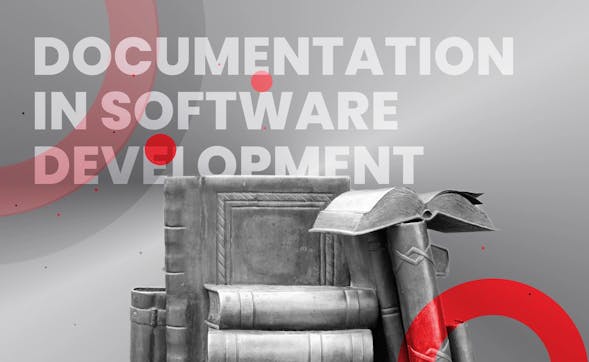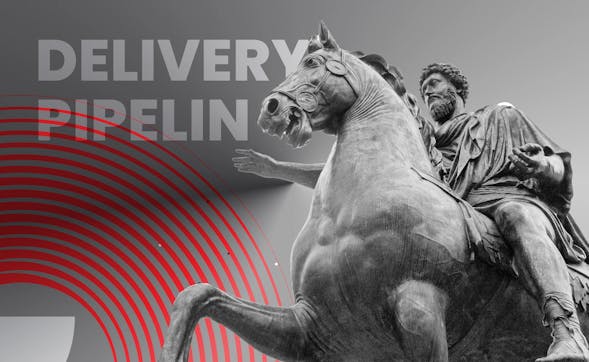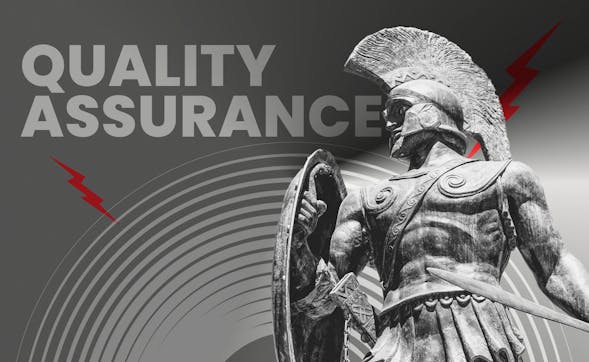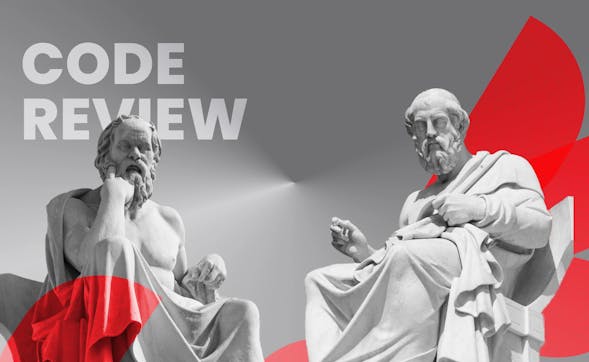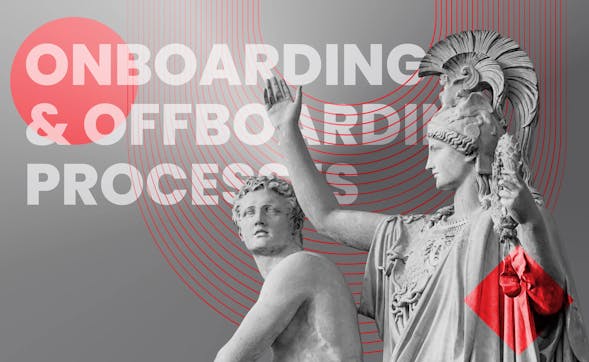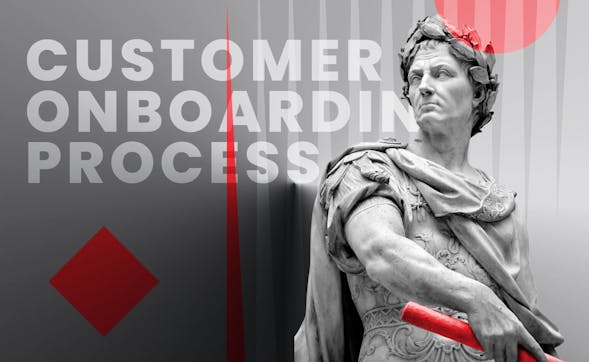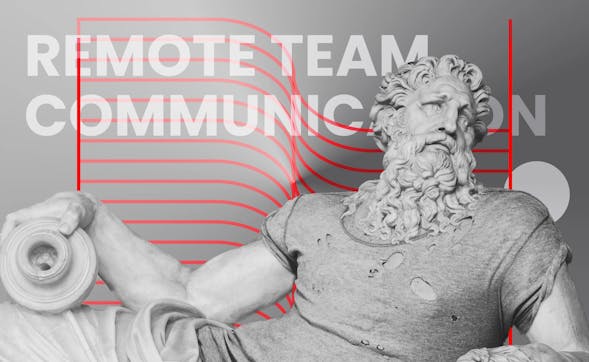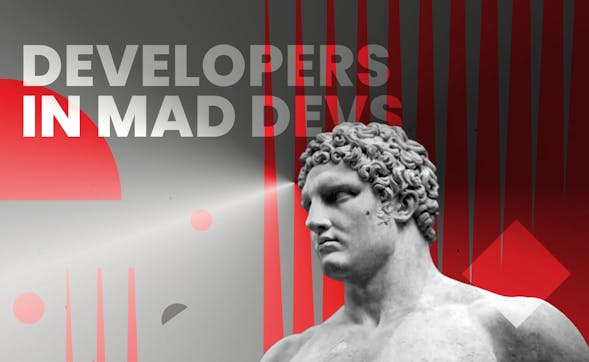Managing a team of developers isn’t an easy task, even if developers work in an office. It becomes more complicated when the team is big and when you need to manage them remotely.
At Mad Devs, we prefer to work remotely. We work on a good number of projects, from small startups to complex enterprise solutions. That’s why we need efficient ways to ensure every team member works properly.
A daily standup meeting as a way to track performance and difficulties
One of the ways to be aware of what people are doing is to organize standups every day. A standup meeting is a meeting where all team members participate while standing. It is a common practice in some offices to organize a team and learn about their progress and problems.
It is easy to do when everybody works in the office and comes to work at the same time. If people have a flexible work schedule, or if they work remotely, it is difficult to organize a face-to-face standup meeting.
We embrace a remote-first approach to work which means that standups in the office cannot be applied as an efficient way to ensure the progress of our team members. That’s why we follow specific rules to make the agile stand up meetings online more organized and efficient.
- We use a bot called Comedian to track who has submitted a standup and who has ignored it. If somebody didn’t submit a standup, the bot would remind the person until the standup is finally written.
- We write every standup based on the scheme:
undefinedundefinedundefinedundefined - Every standup is written within a specific timeframe.
How to write a standup correctly
For us, standup meetings are not just a formality. We aim at delivering value which means that the product developed by us shall bring profit, solve some issues, or otherwise make the client or users benefit from it. That’s why we need to make sure that our team members use their time efficiently:
- They don’t lose focus;
- Our specialists see who is working on which task;
- Stakeholders see the progress.
It can be done only if standups are written properly. So, a standup that looks like this:
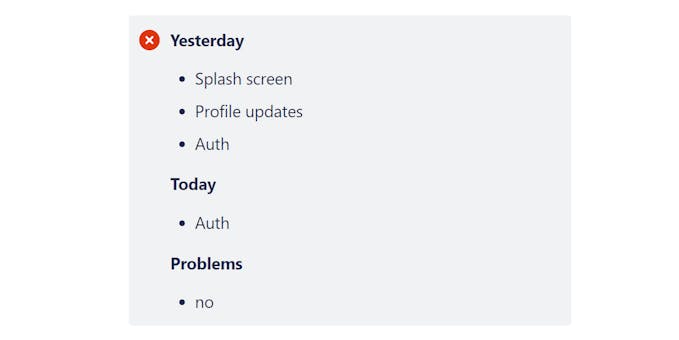
Is not fine. From it, we cannot see what the person did and what tasks he is going to complete. Therefore, this standup meeting format is not suitable if we want to make it a way to see whether the team works efficiently.
However, if a standup looks like this:
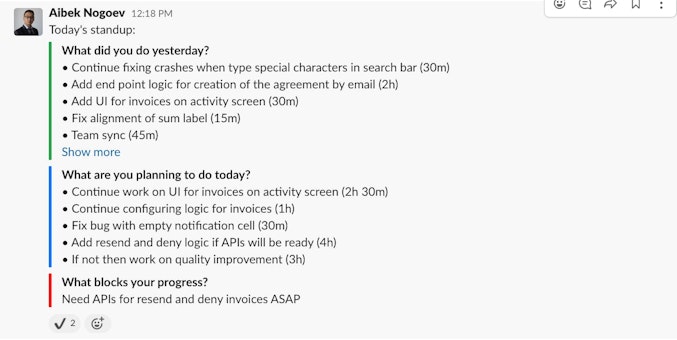
It informs us about what the person was working on, what is planned for today, and what issues the person has faced. This standup is written according to the standup meeting rules we adhere to.
Virtual team meetings for efficient communication
Effective virtual meetings aren’t easy to organize because they need a lot of planning and, if there are no established processes to do so, they require a lot of time and effort from the meeting organizer.
However, remote meetings allow the team to discuss the progress and arising issues together, to set aims, develop and update plans, and give feedback. That’s why we organize such meetings regularly. To make them meaningful, we have developed a special virtual meeting etiquette, or rather a special flow to organize and conduct them:
- We always plan them. The team members know when every team meeting is scheduled. We create a recurring event in Google calendar, and every team member can see when the next team meeting is going to happen. So, there is no way to miss it.
- We ask the team to prepare their questions and matters to discuss in advance. A project manager creates in Slack a reminder to all team members with a respective request.
- Finally, invitations to the meeting are sent via email. In Slack, we create a notification to ensure that everybody comes on time.
This flow facilitates the online meeting management significantly, especially if the team is big and if a client is invited to a meeting (yes, such remote meetings with customers are a way to engage customers in the process. Therefore, we invite customers frequently).
Effective 1-on-1 meetings to develop trust
While team meetings bring immense value, we cannot underestimate the importance of effective 1-on-1 meetings.
Everybody is busy with daily tasks. Therefore, communication is frequently neglected. That’s why many members of distributed teams cannot share their issues and get assistance from their colleagues. In many cases, it happens not because the colleagues aren't willing to help but because of the lack of safe and efficient ways to communicate the issues.
That’s why we have adopted the 1-on-1 virtual meetings best practices to prevent such issues. Moreover, we have moved further by turning our 1:1 meetings into an efficient tool to get feedback from people on work, life, or whatever they want to share. We do it by following these virtual meeting rules:
- 1-on-1 meetings are organized regularly. In most cases, it happens once per month.
- During the meeting, we don’t make reports, don't share the feedback about the person for whom the meeting was arranged. We talk about work, the person, we discuss people’s impressions from a project, colleagues, tasks. Some people want to share their issues beyond working processes which is also fine.
- We don’t force people to speak. If they don't want to talk, it is also ok. Finally, it is not an interrogation.
- During a meeting, the manager takes notes. It is made with several purposes:
Notes will serve as a reminder about the meeting content, the issues discussed, and the problems raised. They will help to start the following meeting with the matters that were raised. It creates trust between the manager and the employee.
During such meetings, people might share some problems (family, health, or whatever) that aren't connected with work. We inform before the meeting that any information not related to work will not be disclosed unless the person gives permission to do so. But if we see that we can assist in resolving the issue, we offer help. If we know that somebody from the team has the needed resources to solve the problem, we ask if we can involve that team member in the problem-solving process.
Bottom line
While we use advanced project management, time tracking, and other tools to work efficiently, we believe that communication shall be prioritized. For managers, it is an efficient way to manage their remote team and keep in touch with both the team and the clients. And for employees, it is a way to feel important, valued, and protected. It is especially important in a distributed team. It allows us to feel connected and to work as a team.

